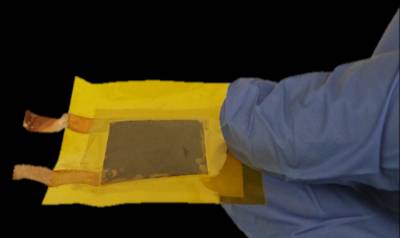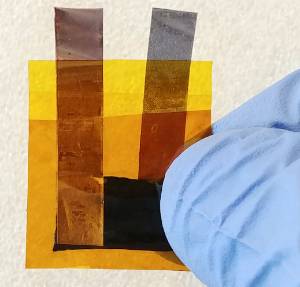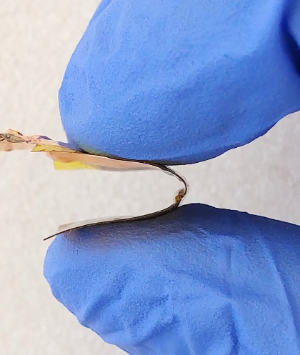LSU Professors Team Up to Provide Power at the Extremes
August 18, 2020
 BATON ROUGE, LA – LSU Chemical Engineering Assistant Professor Chris Arges and LSU
Mechanical Engineering Assistant Professor Manas Gartia recently published a research
article in ACS Applied Energy Materials about a supercapacitor project they are working
on.
BATON ROUGE, LA – LSU Chemical Engineering Assistant Professor Chris Arges and LSU
Mechanical Engineering Assistant Professor Manas Gartia recently published a research
article in ACS Applied Energy Materials about a supercapacitor project they are working
on.
For those who don’t know, a supercapacitor is a device that stores electrical energy like a battery but at much larger power densities. This technology has broad application to powering aerospace electronics, starting electric vehicles and firing large weapons like naval rail guns.
The research article highlights a newly invented solid-state supercapacitor that is flexible and operates over a wide temperature range of -70 degrees Celsius to 220 degrees Celsius. The device was enabled by novel reduced graphene oxide electrodes and an electrolyte membrane separator. Both of these materials have been filed for patent applications by LSU’s Office of Innovation and Technology Commercialization.
 When discussing the implications of the work, Arges pointed out that, “the technology
is a key enabler for space applications that experience frigid temperatures, such
as a space shuttle or a satellite being on the dark side of the moon, and high temperatures,
such as the same space vehicles being exposed to the sun.”
When discussing the implications of the work, Arges pointed out that, “the technology
is a key enabler for space applications that experience frigid temperatures, such
as a space shuttle or a satellite being on the dark side of the moon, and high temperatures,
such as the same space vehicles being exposed to the sun.”
“The electrochemical properties of most supercapacitor devices degrade quickly when the operating temperature deviates from room temperature,” Gartia said. “That’s why it is difficult to realize a supercapacitor that functions across the temperature spectrum.”
Supercapacitor technology has also caught the attention of Tesla; it recently acquired a supercapacitor company called Maxwell Technology for $218 million.
Future collaborative work by the professors is under way to improve the energy and power density of the new supercapacitor configuration. Arges and Gartia are also working together on pairing Gartia’s lab electrodes and Arges’ lab membranes for water remediation and environmental sensing.

Like us on Facebook (@lsuengineering) or follow us on Twitter and Instagram (@lsuengineering).
###
Contact: Libby Haydel
Communications Specialist